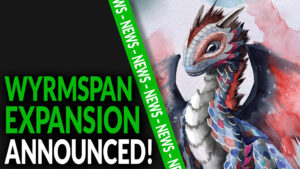You’re eyeing that latest board game release, but suddenly, its price jumps unexpectedly. What’s behind this surge?
In early 2025, the U.S. administration under President Trump implemented significant tariffs: a 20% tax on goods imported from China and a 25% tariff on imports from Canada and Mexico. Considering that a vast majority of board games are manufactured in these countries, these tariffs have sent ripples throughout the industry.
Let’s break it down. Tariffs are essentially taxes paid by importing companies based on the manufacturing cost of goods. For board games produced in China, a 20% tariff directly increases the “landed cost”—the total expense of getting a product to the U.S., including manufacturing and shipping. For instance, if a game costs $10 to produce in China, the tariff adds an extra $2 per unit, raising the landed cost to $12 before shipping and other fees. Similarly, games manufactured in Canada face a 25% tariff, adding $2.50 on a $10 base cost. Given that many publishers operate on razor-thin margins, absorbing these additional costs is hardly feasible.
Consequently, these increased costs are often passed on to consumers through higher Manufacturer Suggested Retail Prices (MSRP). Industry experts suggest that a 10% tariff could elevate MSRP by $5 to $10 for a typical game, depending on markup formulas. With the current 20% tariff on Chinese goods, a game with a pre-tariff landed cost of $11.50 might see its MSRP rise from $50 to $60 or more. These estimates align with analyses from publishers like Arcane Wonders and Stonemaier Games, who note that even small cost increases amplify significantly at retail due to standard markups.
Small and mid-sized publishers, especially those reliant on crowdfunding platforms like Kickstarter, face acute challenges. Many lock in pricing based on pre-tariff manufacturing quotes, only to encounter higher costs when goods arrive post-tariff. This can erode profits or force losses unless prices are adjusted mid-campaign, risking backer backlash. Larger companies like Hasbro might absorb some costs due to healthier margins, but most publishers lack this cushion. Some are exploring alternatives—shifting production to Southeast Asia, Europe, or even the U.S.—but these options come with trade-offs. U.S. manufacturing is costlier and lacks the capacity for small runs, while other regions may compromise on quality or raise shipping expenses, negating tariff savings.
To mitigate price hikes, some publishers might opt for cheaper components—thinner cardstock, fewer miniatures, or simpler designs. This “deluxification” reversal could maintain affordability but risks alienating consumers accustomed to high-quality production values in modern board games.l Alternatively, companies might “deluxify” further, slightly raising prices beyond tariff costs to justify premium components, betting that buyers will accept a $70 deluxe game over a $60 basic one. This strategy’s success depends on market tolerance, which is uncertain given inflation pressures already squeezing discretionary spending.
Higher prices could dampen demand, particularly as tariffs coincide with broader cost-of-living increases. Board gamers, often selective due to budget constraints, might buy fewer titles or pivot to second-hand markets and 3D printing—though the latter is limited by tariffs on Chinese-made printers. Retailers, especially small game stores, fear a 20-25% sales drop if prices rise across the board, potentially forcing closures. Crowdfunding could see delays as publishers wait out tariff uncertainty, while some titles might stay out of print longer if reprint costs become prohibitive.
The tariffs’ unpredictability—ranging from 10% in February 2025 to 20% now, with threats of up to 60%—complicates planning. Publishers like Renegade Game Studios are scouting new manufacturing hubs, but such shifts take time and capital. Advocacy efforts, like those from the Game Manufacturers Association, aim to secure exemptions, though success is uncertain given the administration’s tariff enthusiasm. If tariffs persist, the industry might consolidate, favoring bigger players who can weather the storm, while smaller firms fold or retreat to digital formats. However, if tariffs are short-lived or mitigated, price increases might stabilize at 5-10% rather than the 20-40% some fear.
In the short term, expect board game prices in the U.S. to rise by $5-$15 per title, with a $50 game potentially hitting $60-$70 depending on origin and publisher response. Smaller publishers and retailers face existential risks, while consumers may see fewer options or lower quality. Long-term effects hinge on tariff duration and industry agility, but for now, the board game market is bracing for a costly shakeup.
These negative effects of the current tariffs could only be cushioned if President Trump were to actually abolish income tax, as already announced, and thus provide end consumers with more actual income.















